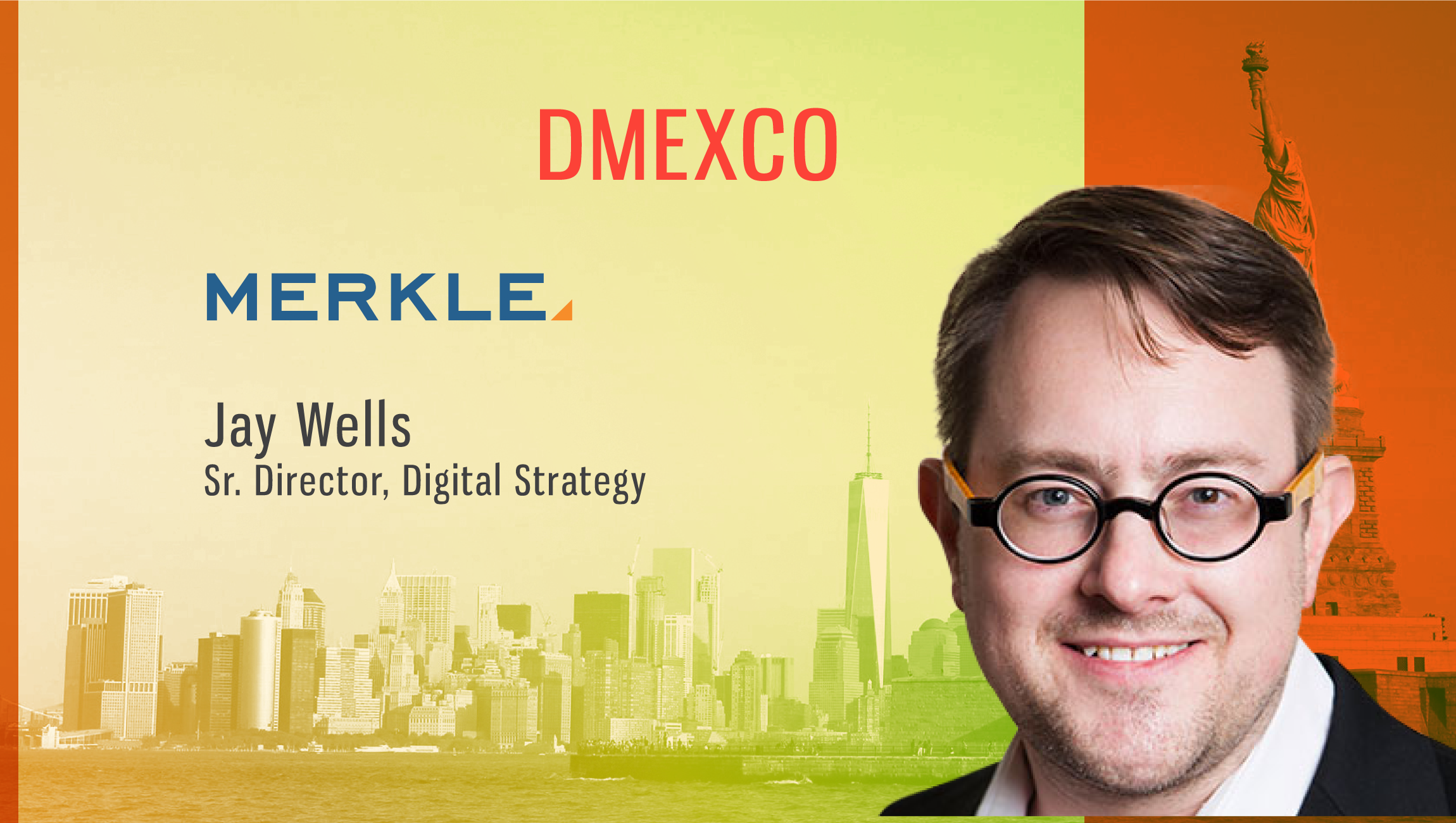Jay Wells
Sr. Director, Strategy & Planning, Merkle
The explosion of OTT publishers in the last 2 years and the acceleration of cord-cutting behavior is beginning to shift the dynamic between large national advertisers and media agencies. We spoke to Jay Wells, Senior Director, Strategy & Planning, Merkle, to learn about the key events in OTT and Programmatic Advertising industry that have made the biggest impact on the business.
Html code here! Replace this with any non empty text and that's it.
Tell us about your role at Merkle and the team/technology you handle.
I help lead Merkle’s channel strategy team. We support our clients’ acquisition and CRM teams by developing true people-based marketing strategies. To do this, we mine insights from a combination of research platforms such as Simmons, Hitwise, SEM Rush, and Mintel, as well as deployment platforms such as M1, 4C, and our clients’ marketing technology stack.
What functions do you ensure for high-performance ‘strategy and planning’ at Merkle?
We cross-train our strategists to be a hybrid of comms planners, platform experts and data whisperers. This allows us to develop practical strategies based on real-people data and the capabilities of deployment platforms. We hire curious-minded marketers who are skilled at collaborating across Merkle’s different practice areas — Data, Analytics, Media, and Technology — and integrate the information we receive. This is how we combine Merkle’s market-leading strengths to our clients’ advantage.
How do you leverage technology for people-based digital marketing?
For people-based marketing to work, communication strategies must be grounded in real-people insights. So, at Merkle, we use M1, our PII-based data analysis and activation platform. M1 pulls in PII data from our national consumer database, including attributes such as purchasing behavior, wealth, content preferences, and household TV viewing.
We match our clients’ customers to our data in M1, which yields insights for targeting prospects, segmenting current customers for retention, and developing persuasive messaging. We can do this in bits and pieces using other technologies, such as our clients’ DSP, DMP and ESP instances but M1 is our preferred technology due to the robust variety and quality of people-based data available to us on that platform.
Which key events in OTT and Programmatic Advertising industry made the biggest impact on your business and how?
Without a doubt, the demand for increased accountability in the programmatic supply chain has driven opportunities our way. The market has been dogged by junk impressions loaded below the fold that nobody sees, as well as bot-driven impressions and fraudulent clicks/conversions. As a result, Merkle has developed a solution for that called Publisher Addressable Marketplace (PAM), an ecosystem of premium publishers such as Conde Nast, Time and Pandora that offer 100 percent viewable inventory above the fold and key their user logins to the addressable audience segments we create in M1.
The explosion of OTT publishers within the last 2 years and the acceleration of cord-cutting behavior is beginning to shift the dynamic between large national advertisers and media agencies. Reach in linear TV is declining and advertisers are shifting budget to OTT to find those missing consumers.
But the OTT landscape is a wild west. There are no standards for measuring OTT audience reach and duplication or attributing the impact of the advertising. And at the same time, OTT inventory can be bought through DSPs, exchanges, or directly from the publisher — each offering a different set of targeting capabilities.
The net impact of this is that TV budget has begun to shift from traditional TV buying agencies that rely on relationships with a handful of MVPDs to tech-savvy agencies such as Merkle that are comfortable buying media programmatically. We’re still in the early days here, and the percent of the budget that is shifting is still a wee fraction of the $75 billion spent annually on TV in the US. But it will pick up pace as the OTT landscape consolidates and becomes more organized.
As a strategist, I’m excited about this development because people-based marketing, and addressable advertising in general, is often misunderstood as playing only a role in the bottom of the funnel. With greater OTT targeting capabilities, we can now demonstrate the efficacy of people-based marketing throughout the funnel: by eliminating waste by reaching only the prospects that matter, wherever they may be in their customer journey.
What are your thoughts on AI/ML and the scope of IoT in completely revolutionizing Digital Reinventions for omnichannel businesses, especially in retail?
I personally dislike the hype our industry has spun around AI. For many, it has become a meaningless buzzword or a symbol of gimmicky creative applications.
The fact is, machine learning has been working hard in marketing departments for years now in website personalization engines such as Pega and campaign decisioning platforms such as Adobe Target. Facebook’s targeting AI optimizes ad frequency to the most likely responders/converters in an advertiser’s defined target audience. I believe it is one of the reasons why marketers are having so much success on Facebook (and by extension, why Facebook can command ever-increasing CPMs.)
I think AI has already made a big impact in marketing in very practical (but inauspicious) ways. And this is especially true of retail. Consider the pervasive use of product recommendation engines such as Dynamic Yield. I think the AI product set and applications are reaching a state of maturity, and the future will be more evolution than revolution. The solutions will become smarter and more predictive — and will require more and innovative data to do so.
I believe that is the real opportunity for IOT: becoming a pipe of banal but incredibly useful data to feed marketers’ AIs. Right now, Samsung’s smart refrigerator may be able to order groceries from Fresh Direct when depleted. But in the future, Samsung might sell a person’s refrigerator contents to Instacart, who will use it to make product recommendations in order to grow the size of the cart. Samsung TVs might sell owners’ OTT content consumption to Amazon, to make prime video recommendations smarter. I can imagine a “smart closet” device that provides data to Zara for making clothing recommendations (scary!)
What are your predictions on people-based marketing and how do you consume all the information related to the industry?
Keeping up on developments in people-based marketing is not as easy as you might think. There is no trade pub focused entirely on people-based. The market is still largely organized around silos: marketing technology, data analytics, media, creative, etc. People-based marketing sits at the intersection of all of these, so I’ve created a feed that pulls in a lot of this content, including MarTechSeries. I also make sure to keep up on the business of the industry, and for that, I turn to Pivotal’s Brian Wieser.
Sifting through all of the news, I notice two things: First, publishers are increasingly adding capabilities to onboard list-based audiences. This is a clear sign that demand for people-based solutions continues to grow.
Second, I notice that our peers at the other holding companies are investing in addressability at scale. Omnicom’s creation of Hearts & Science, WPP’s development of mPlatform, and most recently, IPG’s acquisition of Acxiom Marketing Solutions are bellwethers of the industry advancing people-based marketing.
Thanks for chatting with us, Jay.
Stay tuned for more insights on marketing technologies. To participate in our Tech Bytes program, email us at news@martechseries-67ee47.ingress-bonde.easywp.com











